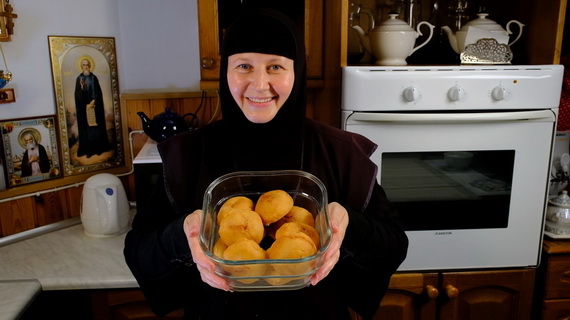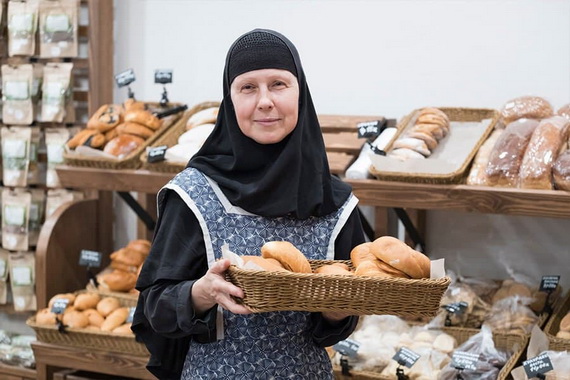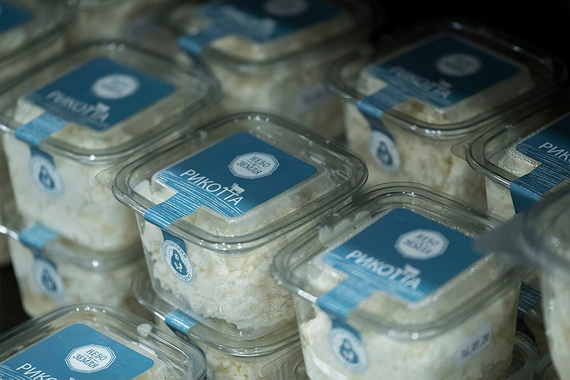
In our lives, food and nourishment matter. Unsurprisingly, we receive many queries from our readers about monastic diets. What do nuns eat? How is the diet of a nun different from a secular diet? How are Lenten meals different from regular ones? Do monastics eat chicken or other meat? Here are some answers.
By His coming to the world and His sacrifice, Christ sanctified the human being. Each of us is a temple of God and a reflection of His beauty and love. The food we eat is the brick and mortar of the temple's walls. Our common meals are a foundation of our unity in the spirit. In the Scripture, we read about the Last Supper shared by Christ and His apostles that gave rise to the tradition of the Agape meals in memory of this event. We remember these every time during our shared meals in the monastic refectory.
Sharing meals from our table with travellers and the needy is a long-established monastic tradition. The canteen for the poor at the Marfo-Mariinsky Convent established in the early 20th century by our Patron Saint Elisabeth Romanov provided up to 300 meals a day for Moscow's poor. We continue this tradition. Every day, we feed several hundred people, including the residents of our farmsteads, our volunteer labourers and needy parishioners.

The differences are grounded in the Christian attitude toward food and diet. As Saint John Chrysostom taught, "We do not live to eat, but eat to live." The secular world often tends to see food as a source of pleasure and an object of desire, and this attitude often results in a lack of moderation and disease from overeating. In our understanding, diets should be sufficient, moderate, and varied to keep us in good health and give us the energy to serve God. In our prayers, we ask Him to give us our daily bread to be able to do His will.
Monastic meals are simple, but also tasteful. For many centuries, monasteries were the centres for the art of cooking, and keepers of authentic recipes of many dishes popular in our day. These include multiple varieties of bread and pastry, rice and vegetable meals, honey and much else.

In our menu, we give preferences to dishes from local products or ingredients from our farmsteads. In the secular world, this strategy - termed "sustainable food sourcing" - is practised by a small number of restaurants and retail chains in Europe. In monastic life, it has been in use for many centuries. As early as the fourth century AD, Saint Basil the Great taught, "Of all meals, give preference to those that are easiest to procure". In keeping with this teaching, we produce a substantial part of the ingredients for our meals in our farmsteads, and use our unique recipes to make cheese, yoghurt and Kvass, bake bread and pastries and make pickles and sauerkraut.
Our menus on fasting days, of which there are about 200 in a year, is different from ones on fast-free days. During fasts, our diets are egg and milk-free. We eat vegetables, grain, fruit, and nuts. Outside of fasts, our meals include dairy products, eggs and fish. On some occasions, we have special treats like sweets, chocolate and ice cream. Any willing person can sample our dishes at our monastic cafe. Many of our regular customers travel from distant parts of the city to do so.
One key determinant of taste is the ingredients. Yet our dishes have another prominent distinction - all are prepared with passion and love. Some of our monastic sisters come from other countries, and many are willing to share the recipes of their traditional dishes that vary our diets. All the dishes are simple to cook and are made from easily available ingredients. In this section, we share some of their recipes.
The Venerable Saint Maximus the Confessor wrote: "Food was given to us for our nutrition and healing. As with all other things, misuse of food is sinful." We hope that the pieces from this section will add variety to your diets to nourish your body and spirit.